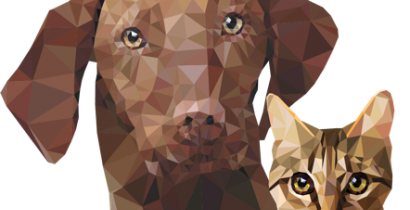Home -> Diseases -> Flea-Borne Diseases -> Haemoplasmosis
HAEMOPLASMOSIS
Haemoplasmosis, formerly called haemobartonellosis, is a vector-suspected infection of the red blood cells that affects both, cats (Clark, 1942; Flint and Moss, 1953; Foley et al., 1998; Willi et al., 2005) and dogs (Benjamin and Lumb, 1959; Donovan and Loeb, 1960). Besides these two affected species, closely related haemoplasmas have also been detected in several other mammals (see e.g., Messick, 2004 for detailed listing). In cats, the corresponding disease is also named feline infectious anaemia or feline haemotrophic mycoplasmosis.
Regarding humans, organisms resembling haemoplasmas have been reported in blood smears from human patients. Mycoplasma suis (Yuan et al., 2007, 2009), Mycoplasma ovis (Sykes et al., 2010), but also Mycoplasma haemofelis in an HIV patient with concurrent Bartonella henselae infection (dos Santos et al., 2008) have been reported. Furthermore haemoplasma-like bacteria with an intra- and extra-erythrocytic position and found inside megakaryocytes have been reported to be associated with systemic lupus erythematosus in human patients (Kallick et al., 1972; Kallick et al. 2007). Thus, a zoonotic potential of haemoplasmas cannot be excluded and should be further addressed (Sykes, 2010; Willi et al., 2007).
Pathogens
Epidemiology
Transmission
Pathogenesis
Diagnosis
Clinical Signs
Treatment and Prevention
Zoonotic Potential
References
PATHOGENS
Haemoptrophic (hemotropic) mycoplasmas, formerly known as Haemobartonella and Eperythrozoon, are small (<1 mm), pleomorphic bacteria that attach to red blood cells of various mammalian species (Willi et al., 2007). Until recently, they were classified as rickettsial organisms, based on their small size, Gram-negative staining properties, red blood cell parasitism and proposed transmission by blood-sucking arthropods (Kreier and Ristic, 1984). Meanwhile, based on molecular characterization, a closer relationship to members of the class Mollicutes has been described (Neimark et al., 2001; Rikihisa et al., 1997). This molecular relationship and some further phenotypic characteristics led to a reclassification of the genera Haemobartonella and Eperythrozoon within the genus Mycoplasma (family Mycoplasmataceae) as haemoptrophic/hemotropic mycoplasmas (Neimark et al., 2001), also denominated haemoplasmas (hemoplasmas) as trivial name (Neimark et al., 2001).
These haemoplasmas are characterized as small (0.3–0.8 mm), unculturable, epierythrocytic bacteria that are capable of causing severe haemolytic anaemia (Sykes, 2010).
Relevant species described in cats are Mycoplasma haemofelis (Mhf) (formerly designated the “large form” or Ohio strain/isolate), Candidatus Mycoplasma haemominutum (CMhm) (formerly designated the “small form” or California strain/isolate) (Foley and Pedersen, 2001; Neimark et al., 2001; Tasker and Lappin, 2002) and Candidatus Mycoplasma turicensis (CMt), identified in a Swiss pet cat for the first time (Willi et al., 2005, 2006).
In dogs, two species have been described. Mycoplasma haemocanis (Mhc), formerly known as Haemobartonella canis, has been described in 1959/1960 (Benjamin and Lumb, 1959; Donovan and Loeb, 1960), but early reports of sporadic cases of haemobartonellosis in dogs in the United States even date back to 1935 (Knutti and Hawkins, 1935; McNaught et al., 1935). As with the feline species, the pathogen has been reclassified to Mycoplasma haemocanis (Messick et al., 2002). In 2004, a second haemotrophic mycoplasma was identified in a splenectomized immunocompromised dognamed Candidatus Mycoplasma haematoparvum (CMhp) (Sykes et al., 2004, 2005).
Recently, the two feline species CMhm and CMt were also detected in dogs (Obara et al., 2011; Soto et al., 2017), and Candidatus Mycoplasma haematoparvum-like was found in cats (Sykes et al., 2007; Martínez-Díaz et al., 2013; Vergara et al., 2016).
EXPLORE OUR CONTENT
 CVBD MapsThe CVBD Occurence World Map presents country-specific situations based on current scientific knowledge and feed-back from experts around the world in an easy-to-grasped way. |
| Read more-> |
 ResourcesElanco Animal Health supports education in parasitology and especially in the field of vector-borne diseases. Access image collections, discover the World Forum calendar, interesting links and our glossary. |
| Read more-> |
 CVBD World ForumThe CVBD World Forum is a working group of leading international experts with the mission to enhance knowledge and communication on companion animal vector-borne diseases for the improvement of animal, human, and environmental health. |
| Read more-> |
